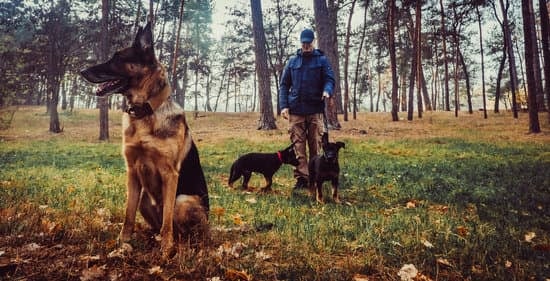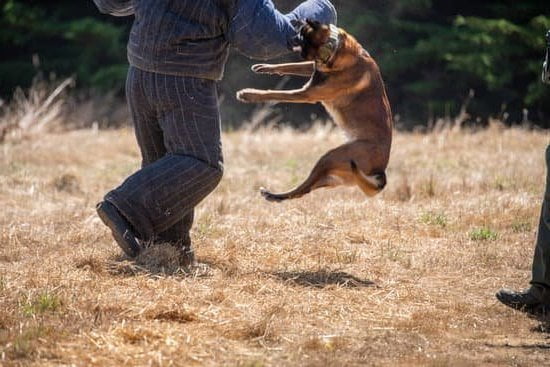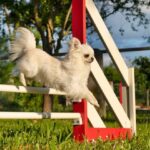Fear aggression can be a challenging behavior for dog owners to navigate, but with the right knowledge and training techniques, it is possible to help your furry friend overcome their fears. In this article, we will delve into the world of fear aggression in dogs and explore effective strategies for training them.
To begin, it is important to understand what exactly fear aggression entails. Fear aggression is a defensive response that dogs display when they feel threatened or scared. This can manifest as aggressive behaviors such as growling, barking, lunging, or even biting. It is crucial to recognize that fear aggression stems from a place of fear or anxiety rather than inherent viciousness.
Identifying the signs of fear aggression in your dog is an essential step in addressing this issue. Understanding your dog’s body language and recognizing the signals they exhibit when they feel fearful or anxious can help you intervene before the situation escalates.
Differentiating fear aggression from other types of aggression is also important, as the underlying causes and appropriate training methods may vary. By paying attention to early warning signs, you can prevent potential conflicts and work towards resolving your dog’s fear-based behaviors.
Training and managing fear aggression in dogs are vital not only for their safety but also for their overall well-being. Helping a fear-aggressive dog overcome their fears requires patience, consistency, and an understanding of their unique needs. With proper guidance and a comprehensive behavior modification plan tailored to your dog’s specific triggers, you can create a safe and supportive environment where they can learn new coping mechanisms and build confidence.
In the following sections of this article, we will explore different aspects of training fearful aggressive dogs in-depth: from assessing the root causes of fear aggression to creating a safe environment, developing behavior modification plans, implementing socialization strategies, managing specific situations effectively, practicing patience and consistency as responsible owners, seeking resources and support for training purposes.
By empowering dog owners with knowledge about fear aggression in dogs along with practical strategies and tools, we aim to provide a comprehensive guide for training fear-aggressive dogs. It is crucial to remember that change takes time, but with dedication and the right approach, your dog can overcome their fear aggression and lead a happier, more fulfilled life.
Identifying the Signs of Fear Aggression in Your Dog
Signs of fear aggression in dogs can be subtle and easily overlooked, but it is crucial for owners to accurately identify these signs in order to address the behavior effectively. One common body language signal of fear aggression is a stiff and tense body posture, with the dog leaning forward or backward. Dogs experiencing fear aggression may also exhibit defensive behaviors such as growling, snarling, or barking.
Differentiating fear aggression from other types of aggression is important because the underlying causes and appropriate training methods can vary. Fear aggression typically occurs when a dog feels threatened or scared and reacts defensively. On the other hand, other types of aggression, such as dominance aggression or territorial aggression, have different triggers and require different approaches to training.
Recognizing the early warning signs of fear aggression is crucial for preventing escalations and potentially dangerous situations. Some early warning signs include lip licking, whale eye (when you can see the whites of their eyes), tremors, and avoidance behaviors. If these signs are ignored or misinterpreted, a fearful dog may resort to more intense forms of aggression as a last-ditch effort to protect itself.
| Body Language | Behavioral Signals |
|---|---|
| Stiff body posture | Growling |
| Tense facial expression | Snarling |
| Leaning forward or backward | Barking |
| Lip licking | Avoidance behaviors |
By recognizing these visual cues and behavioral signals, dog owners can take appropriate action to address fear aggression in their pets.
Assessing the Root Causes of Fear Aggression
Understanding the root causes of fear aggression in dogs is essential in order to effectively train and manage this behavior. There are several factors that can contribute to fear aggression, including genetics and breed predisposition, traumatic experiences, and fear imprinting.
Genetics and breed predisposition play a significant role in fear aggression. Certain breeds may have a higher risk of developing fear aggressive tendencies due to their genetic makeup. For example, some breeds that were originally bred for guarding or protection purposes may be more prone to displaying fear aggression.
Traumatic experiences can also trigger fear aggression in dogs. These experiences may include abuse, neglect, or being involved in a traumatic incident such as a car accident or natural disaster. Dogs who have gone through these types of traumatic events may develop a heightened fear response towards certain triggers or situations.
Fear imprinting is another factor to consider when assessing the root causes of fear aggression. Fear imprinting occurs when a young puppy has a negative experience during their critical socialization period, typically between 7 and 14 weeks old. This negative experience can create lasting emotional scars and result in fear aggression later in life.
When working with a fear-aggressive dog, it is important to take into account these root causes and tailor the training approach accordingly. By understanding why your dog is exhibiting fear aggression, you can implement strategies that address their specific needs and provide them with the appropriate support.
In the next section, we will explore how to create a safe and supportive environment for your fear-aggressive dog, which is crucial for their overall well-being and training progress.
Root Causes
- Genetics and breed predisposition
- Traumatic experiences
- Fear imprinting
Creating a Safe and Supportive Environment
When training fear-aggressive dogs, creating a safe and supportive environment is crucial. By designing a comfortable space for your dog, minimizing triggers, and incorporating positive reinforcement, you can help alleviate their anxiety and promote a more positive behavior. Here are some strategies to consider:
- Designing a comfortable space for your fear-aggressive dog: Provide your dog with a designated area where they can retreat and feel secure when they are feeling fearful or anxious. This can be in the form of a crate, a specific room, or even a cozy bed with blankets. Make sure this area is quiet, calm, and free from any potential triggers that could provoke aggression.
- Minimizing triggers and providing a predictable routine: Identify the specific triggers that set off your dog’s fear aggression and try to avoid them as much as possible during the initial stages of training. For example, if your dog becomes aggressive when someone approaches their food bowl, feed them in a separate room without any disturbances. Establishing a predictable routine with consistent mealtimes, exercise schedules, and playtime can also help reduce anxiety.
- Incorporating positive reinforcement and rewards: Positive reinforcement is essential when training fear-aggressive dogs. Use reward-based methods such as treats, praise, toys, or playtime to encourage desirable behaviors and create positive associations. Whenever your dog reacts calmly in situations that would typically trigger fear aggression, reward them immediately to reinforce that behavior.
In addition to these strategies, remember to remain patient and understanding throughout the process. Training a fear-aggressive dog takes time, but with consistency and dedication, progress is possible. By creating an environment that prioritizes their safety and well-being while incorporating positive reinforcement techniques, you are setting the foundation for successful behavior modification.
Developing a Behavior Modification Plan
Once you have identified that your dog is displaying fear aggression and understood the possible root causes, it is essential to create a behavior modification plan. A behavior modification plan is a structured approach that aims to change and improve your dog’s behavior through positive reinforcement techniques and consistent training. Here are some key steps to develop an effective behavior modification plan for your fear-aggressive dog.
Firstly, it is important to seek professional help from a certified behaviorist who specializes in fear aggression cases. These professionals have the knowledge and experience to assess your dog’s specific needs and develop a customized plan tailored to address their fear aggression effectively. They can provide guidance on implementing desensitization and counterconditioning techniques, which involve gradually exposing your dog to triggers in a controlled and positive way.
When developing a behavior modification plan, it is crucial to set realistic goals. Fear aggression can be complex, and complete elimination of aggressive behavior may not always be achievable. Instead, focus on managing and reducing the intensity of their fearful responses over time. By setting realistic goals, you can measure progress more effectively and prevent frustration or disappointment.
Implementing desensitization and counterconditioning exercises should be central to any behavior modification plan for fear-aggressive dogs. These techniques involve progressively exposing your dog to situations or stimuli that trigger their fearful response while pairing those triggers with positive experiences or rewards. This helps them associate these triggers with something positive instead of fear or anxiety.
Consistency is key when implementing a behavior modification plan. It is essential to consistently reinforce desired behaviors using positive reinforcement techniques such as treats, praise, or playtime whenever your dog responds calmly in situations that would typically trigger their fear aggression. The more consistent you are with rewarding positive behaviors, the faster your dog will learn new ways to cope with their fears.
Remember that training a fear-aggressive dog takes time. Patience is vital throughout this process; there will be setbacks and challenges along the way. It is important to stay committed and not give up on your furry friend. With consistent reinforcement and repetition of training exercises, you can make progress in managing and improving their fear aggression over time.
By developing a behavior modification plan with the help of professionals, setting realistic goals, implementing desensitization and counterconditioning techniques, maintaining consistency in training, and practicing patience, you can provide an environment that empowers your fear-aggressive dog to overcome their fears and develop more positive behaviors.
Socialization Strategies for Fear-Aggressive Dogs
Controlled exposure to new environments, people, and animals
One of the key strategies for training fear-aggressive dogs is socialization. However, it is important to approach socialization carefully and gradually with a fear-aggressive dog. Controlled exposure to new environments, people, and animals can help desensitize your dog to their fears and build their confidence. Start by introducing your dog to low-stress environments with minimal triggers. Keep the sessions short and positive, gradually increasing the level of difficulty as your dog becomes more comfortable.
When introducing your fear-aggressive dog to new people, it’s crucial to choose individuals who are understanding of your dog’s behavior and willing to follow instructions. Avoid overwhelming situations where there are multiple strangers or loud noises initially. Instead, start with calm individuals who can maintain a quiet environment.
Gradual introductions and positive experiences
Gradual introductions are essential for fear-aggressive dogs to build positive associations with new experiences. This can include meeting unfamiliar dogs or encountering different types of people. Begin by allowing them to observe from a safe distance while rewarding them for relaxed behavior such as sitting or remaining calm.
Positive experiences are key in counterconditioning fear aggression in dogs. Providing treats, toys, or praise when your dog exhibits relaxed body language or responds well in stressful situations can help them associate these situations with positive outcomes.
Building trust and confidence in unfamiliar situations
Building trust is vital when working with fear-aggressive dogs. Focus on creating a secure environment where your dog feels safe and supported during socialization exercises. Encourage interactions while respecting their boundaries and providing ample space if they need it.
Consistency is crucial in building trust and confidence within unfamiliar situations. Ensure that all interactions are consistent in terms of tone, body language, expectations, and rewards. This will give your fear-aggressive dog a sense of predictability, which can help alleviate anxiety and fear.
By incorporating these socialization strategies into your training plan, you can help your fear-aggressive dog gradually overcome their fears, build confidence, and develop positive associations with previously challenging or triggering situations. Remember to be patient and allow your dog to progress at their own pace.
Managing Fear Aggression in Specific Situations
Fear aggression can manifest in a variety of specific situations, and it is crucial for dog owners to understand how to manage their dog’s behavior appropriately. By being prepared and implementing effective methods, owners can help their fear-aggressive dogs feel more secure and reduce the chances of aggressive incidents occurring.
One common situation that can trigger fear aggression in dogs is visiting the veterinarian. The unfamiliar environment, presence of other animals, and various medical procedures can cause anxiety and fear in dogs. To manage fear aggression during vet visits, it is important for owners to communicate with the veterinarian beforehand about their dog’s behavior. This will allow the veterinary team to take appropriate precautions such as scheduling quieter appointment times or providing a separate waiting area.
During the visit, owners should keep their dog on a leash and maintain control at all times. Using positive reinforcement techniques like treats or praise can help redirect the dog’s focus and reward calm behavior. Additionally, bringing familiar items such as a favorite toy or blanket can provide comfort and reassurance to the dog.
Another situation that may trigger fear aggression is when encountering children or strangers. It is essential for owners to introduce their fear-aggressive dogs to new people gradually and under controlled circumstances. This allows the dog to feel comfortable and confident while minimizing potential triggers.
When introducing a fear-aggressive dog to children, it is important to teach both the child and the dog how to interact safely. Supervision is crucial during these interactions, ensuring that both parties are comfortable with each other’s presence and behaviors are managed appropriately.
Lastly, managing fear aggression during walks requires careful attention from owners. Recognizing your dog’s body language cues such as tense muscles, raised fur, or lowered ears can help you identify when they are becoming fearful or anxious.
When faced with a triggering situation like encountering another dog or loud noises, it may be helpful to practice distancing techniques by creating more space between your dog and the trigger. Gradually exposing your dog to these triggers at a safe distance while using positive reinforcement can help them become more comfortable over time.
Overall, managing fear aggression in specific situations requires patience, understanding, and proactive strategies from dog owners. By being aware of potential triggers and implementing appropriate management techniques, owners can create a safer environment for their fear-aggressive dogs and help them gradually overcome their fears.
Patience, Consistency, and Responsible Ownership
Training a fear-aggressive dog requires a great deal of patience, consistency, and responsible ownership. It is important for dog owners to understand that training a fear-aggressive dog takes time and cannot be rushed. Consistency in training methods is crucial to help the dog understand what is expected of them and to build trust. Responsible ownership involves providing the necessary resources and support for your fear-aggressive dog.
Understanding that training a fear-aggressive dog takes time
When working with a fear-aggressive dog, it is essential to have realistic expectations about the progress that can be made. Each dog is unique, and their progress may vary depending on factors such as genetics, past experiences, and temperament. It is important for owners to remain patient throughout the training process and not become discouraged if progress seems slow.
It is also crucial to remember that overcoming fear aggression will not happen overnight. It takes time for dogs to unlearn their fearful responses and replace them with more appropriate behaviors. Consistent reinforcement of training exercises through regular practice sessions will help your fear-aggressive dog develop new patterns of behavior over time.
Consistent reinforcement and repetition of training exercises
Consistency in training methods is vital when working with a fear-aggressive dog. Dogs thrive on routine and structure, so it is important to establish clear guidelines for their behavior and consistently reinforce these expectations. This includes using consistent commands or cues, rewarding desired behaviors promptly, and avoiding mixed messages.
Repetition of training exercises is key to allowing the fearful dog to learn new behaviors more effectively. By repeating exercises in different contexts and environments, you are helping your dog generalize their learning across various situations. This will boost their confidence while keeping them focused on their training goals.
Being a responsible owner and advocate for your fear-aggressive dog
Responsible ownership goes beyond simply providing food, water, and shelter for your fear-aggressive dog. It involves advocating for their well-being and ensuring they receive the care and support they need to overcome fear aggression.
One important aspect of responsible ownership is managing their environment to minimize triggers that may lead to fear-aggressive behaviors. This includes identifying and avoiding situations or stimuli that cause excessive anxiety or stress for your dog. It also means setting clear boundaries and rules in your household to help them feel secure.
Additionally, responsible ownership involves seeking professional help when necessary. Certified behaviorists or trainers with experience in working with fear aggression can provide valuable guidance tailored specifically to your dog’s needs. By seeking out professional resources, you are taking an active role in your dog’s training and demonstrating a commitment to their well-being.
By practicing patience, consistency, and responsible ownership, dog owners can empower themselves to successfully train their fear-aggressive dogs. The process may be challenging at times, but with dedication and the right support, it is possible to see improvement and progress in fear aggression cases. Ultimately, this empowers owners not only to understand their dogs better but also to advocate for them and provide the tools they need to live happy, fulfilling lives.
Resources and Support for Training Fear-Aggressive Dogs
Training a fear-aggressive dog can be a challenging and complex process, but it is not something that you have to face alone. There are numerous resources and support systems available to help dog owners navigate through this journey. Whether you prefer books, online communities, or professional guidance, these resources can provide valuable insights and assistance in training your fear-aggressive dog.
1. Recommended Books, Websites, and Online Communities:
There are several books written by experienced trainers and behaviorists that offer valuable information on fear aggression in dogs. These resources provide insight into understanding the causes of fear aggression and offer practical training techniques to manage it effectively.
Online communities and websites dedicated to dog training and behavior also serve as excellent sources of information and support. These platforms allow dog owners to connect with others who are experiencing similar challenges with their fear-aggressive dogs. They often provide forums for discussion, advice sharing, and access to trained professionals who can answer questions or recommend strategies.
| Resource | Description |
|---|---|
| Book: “The Cautious Canine: How to Help Dogs Conquer Their Fears” by Patricia B. McConnell | This book offers practical advice on understanding canine fears and anxieties while providing guidance on how to help fearful dogs overcome their fears. |
| Website: Fearfuldogs.com | Fearfuldogs.com is an extensive online resource dedicated specifically to fearful dogs. It provides articles, tips, training resources, success stories, as well as links to other helpful websites. |
| Online Community: Reddit’s r/Dogtraining Subreddit | The r/Dogtraining subreddit is a vibrant online community where dog owners and trainers come together to share advice, experiences, and resources on various dog training topics, including fear aggression. |
2. Local Support Groups and Specialized Training Classes:
Attending local support groups or joining specialized training classes can offer tremendous support for dog owners dealing with fear aggression. These groups often consist of individuals who are knowledgeable about dog behavior and training techniques. They provide a safe environment where attendees can discuss challenges and successes with their dogs while receiving guidance from experienced trainers or behaviorists.
Training classes designed specifically for fear-aggressive dogs offer structured programs tailored to address their unique needs. These classes focus on teaching owners effective methods for managing fear aggression in real-life scenarios. Through these group settings, both the dog and the owner can learn valuable skills while building confidence and trust in one another.
3. Professional Resources for Behavior Modification in Fear-Aggressive Dogs:
While there is a wealth of information available through books and online platforms, seeking professional help from a certified behaviorist is highly recommended when dealing with fear aggression. A certified behaviorist can conduct an in-depth assessment of your dog’s behavior, identify triggers or underlying causes of fear aggression, and develop a customized training plan based on your dog’s specific needs.
In addition to providing expertise in behavior modification techniques, certified behaviorists may also have access to additional resources such as medication options or referrals to other professionals if necessary. They will work closely with you throughout the process, offering guidance, support, and regular evaluations to monitor progress.
Remember that every dog is unique, so finding the right combination of resources that works best for you and your fear-aggressive dog may require some trial and error. However, by utilizing these resources proactively, you are equipping yourself with the knowledge and tools needed to effectively train and manage fear aggression in your beloved canine companion.
Conclusion
In conclusion, training fear-aggressive dogs requires patience, understanding, and consistency. It is essential for dog owners to recognize the signs of fear aggression and develop a behavior modification plan with the help of a certified behaviorist. By creating a safe and supportive environment, implementing desensitization and counterconditioning techniques, and practicing socialization strategies, dog owners can make significant progress in managing fear aggression.
It is crucial for dog owners to understand that training a fear-aggressive dog takes time. Consistent reinforcement and repetition of training exercises are necessary for long-term success. It is equally important to be a responsible owner and advocate for your fear-aggressive dog. This includes educating yourself about resources and support available such as recommended books, websites, online communities, local support groups, and specialized training classes.
Despite the challenges associated with fear aggression, it is important to remember that improvement and progress are possible. Through the empowerment of knowledge and tools provided in this article, dog owners have the ability to play an active role in the training process. With patience, understanding, consistency, and access to professional resources for behavior modification in fear-aggressive dogs, dog owners can successfully train their dogs to manage their fear aggression effectively.
Frequently Asked Questions
How do you fix fear aggression in dogs?
Fixing fear aggression in dogs requires a combination of patience, consistency, and professional guidance. First and foremost, it is important to identify the root cause of the fear and address it through desensitization and counter-conditioning techniques. Gradual exposure to the source of fear, whether it be particular environments or specific stimuli, can help the dog develop more positive associations over time.
Providing a safe and calm environment where the dog feels secure is also essential for reducing fear aggression. Additionally, obedience training can help establish clear boundaries and build trust between the dog and owner. It’s crucial to approach this process with empathy, avoiding punishment or forceful methods that may exacerbate the aggression.
How do you gain trust in a scared aggressive dog?
Gaining trust in a scared aggressive dog requires patience, understanding, and an individualized approach based on the dog’s specific needs. Building trust takes time as the dog needs to feel safe and secure in their environment. Establishing predictable routines can help provide a sense of stability that anxious dogs often crave.
Utilizing positive reinforcement techniques like rewarding desirable behaviors can help create positive associations with humans. Slowly introducing new experiences while ensuring they remain within their comfort zone will gradually increase their confidence level over time. It’s important for owners to be consistent, supportive, and understanding during this process to allow for trust-building to occur naturally.
Can you train an aggressive dog to be gentle?
Training an aggressive dog to be gentle is possible with appropriate techniques but may require additional professional help due to its complexity nature. Firstly, it is important to determine if any underlying medical issues contribute to the aggression; addressing those should be a priority. The training should focus on redirecting the aggressive behavior towards more desirable alternatives using positive reinforcement methods such as reward-based training or clicker training.
Teaching basic obedience commands like ‘sit,’ ‘stay,’ and ‘leave it’ can serve as valuable tools for managing aggressive tendencies effectively. Consistency in enforcing boundaries is key for reinforcing good behavior while discouraging aggressive responses. Additionally, involving a professional dog trainer or behaviorist specialized in aggression issues can provide valuable guidance and ensure the safety of everyone involved.

Welcome to the blog! I am a professional dog trainer and have been working with dogs for many years. In this blog, I will be discussing various topics related to dog training, including tips, tricks, and advice. I hope you find this information helpful and informative. Thanks for reading!





